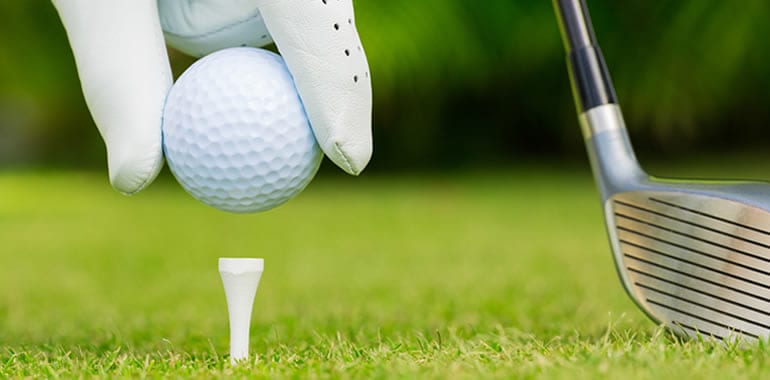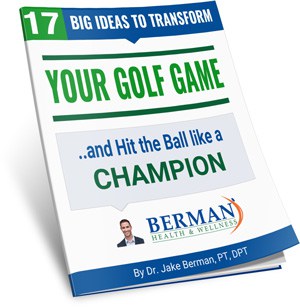
Balance is another one of those funny things like posture. Most people agree that balance and posture are extremely important however very few people do anything to actually try and improve it. The most common answer I hear is “I just have bad balance” essentially using it as an excuse to NOT get better balance. Especially some of the older clients that I work with in Naples. They love to use age as an excuse.
“My golf game was so much better in my younger days when my balance was better.”
Or
“Ever since my back started hurting, my balance has gone to crap.”
I could even go as far as arguing that balance and good posture can be used interchangeably. Meaning, if you have good posture then you are equally balanced on all sides of your body. The same can be said for bad posture (imagine slouched rounded shoulders)- you can see that more “weight” is placed on the front side of the body compared to the back side of the body so it (the body) would not be “balanced”.
Getting back to the original question- “how important is balance?”
I’ll go ahead and say EXTREMELY IMPORTANT!!!! It doesn’t matter if we are talking about life in general or the golf swing, if you don’t have balance then you are at significantly higher risk for “error”. In life that could mean falling while walking to the bathroom at night in low lighting. In the golf swing it could be one of the main driving forces in your inconsistency. Speaking of inconsistency, regarding my own game, I used to love saying “the most consistent thing about my ball flight is how inconsistent it is!”
One of the reasons why scratch golfers can play at that level is because their golf swing is in perfect balance. Watch any real time or slow motion video of a scratch golfer and it will just look effortless (most of the time). Similar to dancers and ballerinas, the way they can seem to float across the dance floor can be extremely deceiving until you try to do even just one of the moves yourself! I’ve had the pleasure of working with some amazing dancers through my career and the amount of strength it requires from literally every single muscle to perform their dance moves is nothing short of mindblowing.
Many people falsely think that declining balance as you age is inevitable. Yes, falsely think! The reason why this myth is busted is because there have been many high quality studies proving that balance can in fact be improved until the day you die. How is that possible you might ask. It’s because balance is contributed to by 3 major systems in your body; your inner ear (vestibular system), vision, and proprioception.
Keeping things very short and simple, I’ll quickly explain how all 3 systems work.
Your inner ear perceives motion in all 3 planes; forward/backward, up/down, and side to side. Then your inner ear sends that feedback to your brain which can in turn direct your muscles to respond appropriately keeping you in “balance”. Vision is self explanatory. When your brain “sees” that you are not level (in any direction), it then directs your muscles to respond appropriately keeping you in balance. And last but by far not the least, proprioception. Imagine tiny little receptors in every single joint in your body that are constantly reporting back to your brain exactly what position that joint is in at that exact moment. Your brain can then respond appropriately and direct your muscles to keep you in balance.
As kids, we are constantly “training” and using all 3 of our balance systems. Kids jump up and down, do cartwheels, handstands, run around in the dark, etc, etc which keeps your vestibular and proprioception systems in tip top shape. Then as we age we start to get more linear. Instead of moving in all directions we start to mainly move in one direction, forward, usually in good lighting. Moving in one direction (forward) in good lighting no longer stresses or trains your vestibular system and minimally trains your proprioception system. This is when we shift towards relying closer and closer to 100% on our vision to give us balance as we age.
This is important to note because your body is one of the most efficient “machines” on this planet. If you don’t use it, you lose it. Muscles and strength is an explicit example of this that most people can understand. However, the same is true for other systems in your body. So as we rely mainly on our vision for balance, our vestibular and proprioception systems gradually decline in effectiveness. And this my friends is the reason why older people are more likely to fall walking to the bathroom in the middle of the night with low lighting. In most people over the age of 80, vision tends to be their main system for balance and when you take that away (low to no lighting)...BOOM! Hope they were wearing their Life Alert button!
Now let's get out of this doom and gloom and shed some light on the situation.
It doesn’t have to be this way!
You don’t have to settle for having “bad balance.” Unless you have had some type of trauma to your vestibular system or muscle paralysis, you can absolutely positively 100% improve your balance. Reason being, your proprioception system has the ability to be the “workhorse” in balancing situations.
Remember when I said earlier that you have a proprioception receptor in every single joint in your entire body? Well guess what you also have crossing every single joint in your entire body… MUSCLES!!! Also, remember when I quoted those high quality studies confirming that balance can be improved until the day you die? That’s because your muscles have the ability to strengthen until the day you die! And that is why you are no longer allowed to say “I have bad balance” and not do anything about it. If you do, you are officially a “complainer”, and nobody wants to hang out with a complainer…
Just for FYI purposes, you can start to see significant improvements in your balance in as little as 6 weeks. Reason being, it usually takes 6 weeks for muscles to hypertrophy (get bigger/stronger). However, you must be doing the right strengthening program and not one of those generic exercise sheets given to you by the cookie cutter corporate physical therapy clinic down the road from me...So yes, with the right strengthening program, you can significantly decrease the chances you’ll need to wear one of those stylish Life Alert buttons around your neck walking to the bathroom in the middle of the night!
"Hmmmm that gets me thinking, maybe I should change our tagline to “Berman Physical Therapy: Come work with us if you don’t want to wear a Life Alert button!” I’m kind of kidding but kind of not..."
Now let's get back to the golf swing and how balance plays a major role in it.
Specifically, I want to use golfers who are 60+ years old for this example. Some of those 60+ year old golfers may think that just because they didn’t fall walking up to the tee box or swinging the club that their balance is “OK”, but that is not the case! The number one way you can identify somebody who has good balance versus not so good balance is the tempo of their swing. Those who have a super fast swing generally have worse balance than those who have a consistent 2-to-1 back to downswing tempo.
Let’s break this down a little bit farther with some explicit examples. For starters, I’m pretty sure we can all agree that a tightrope walker will have exponentially more balance than 99.9% of us reading this right? Keeping that in mind, does a tightrope walker move fast or slow across the rope? Slow of course! They move slowly so that they can recruit all the muscles required to keep them balancing on the rope.
Now let’s imagine if a 60+ year old golfer had to walk across a 6 foot long, eight inch wide plank that was crossing a muddy ditch to get his ball that he hit out of bounce. This is obviously one of his most favorite balls he’s ever played with so there’s no chance he’s going to let this little obstacle get in his way and just leave it over there. Would he attempt to cross that plank fast or slow? Most would answer FAST! Reason being, he didn’t want to “chance” falling into the muddy ditch. He would consider it “chance” because his brain knows that he doesn’t have good enough balance to walk that narrow plank slowly and if he does the chances are higher that he will fall off.
What I can tell you with a very high level of confidence is that the biggest difference in the amount of balance that a tightrope walker has versus a 60+ year old golfer is the amount of muscles they recruit to maintain their balance. With that being said, in general the faster we move the less muscles we will be using. Moving slowly while maintaining balance requires much more muscle activation than moving fast because the faster we move the more we tend to use momentum opposed to muscles. And if you’ve been paying attention you should remember that momentum is not your friend as you get older!
Specifically for golfers over the age of 60 who want to increase their distance with the big stick, the best way to do that is to increase their power (not momentum). Please review the previous chapter if you need a refresher. The way you increase your power is by increasing the amount of muscles you have working. And we just got done saying that we use less muscles the faster we move! Are you starting to see why tempo is so important in the golf swing? Just by slowing down your swing and improving your overall tempo, you have significantly increased your chances of generating more power that could result in a longer ball flight!
Ok so hopefully by now you see how important balance is not only for the golf swing, but also for life in general. And hopefully by now you are asking “what the heck can I do to improve my balance Jake?” Well wait no longer, I’ll give you one of the simplest tests that doubles as an exercise that can have one of the greatest positive impacts on your balance that I know.
Disclaimer:
Please be honest with yourself and if you know you have “bad balance” please don’t try this without proper assistance. We are going to start relatively easy and progress to more advanced levels so please be smart about this! You should be able to hold every position for at least 30 seconds with the goal being 60 seconds. Do NOT progress to the next position if you can’t reach 60 seconds in the previous position first! For all single leg tests, you must test both sides.
I’ll quickly run through the complete progression:
- 1stand with your feet together, trying to make both your heels and big toes touch
- 2place one foot in front of the other with the front heel touching the toe of the back foot
- 3a. Standing with feet together and keeping both knees straight (not locked, just straight), pick one foot straight up off the ground by hiking that same side hip straight up. Do not let either knee bend.
b. Once you can hold each side for 60 seconds, progress to SLOW head turns side to side.
You’ll want to practice these drills as many times throughout the day as you can until you reach success with 3b. Once you achieve success with 3b then you should only do 3b one time every day on each leg… for the rest of your life!
Seriously I want you to do 3b once every day for the rest of your life because once you can do that you will have significantly improved your overall balance and dramatically lowered your chances of falling in low lighting situations BUT you must keep doing it or you will lose it!
The next thing you’ll want to do is translate this improved balance to the golf swing!
One of my favorite drills to do when I’m having trouble on the driving range is to stand with 95% of my weight on my left leg and place my right foot behind me only touching my right big toe to the ground. Then try to hit balls in this position! This will force you to get back into a good tempo and maintain your balance or you’ll end up on the ground!
Please remember a very important statistic I noted earlier: you should be able to see noticeable improvements in your balance after working on these drills around the 6 week mark. If you do not see noticeable improvement then please email me Drberman@bermanpt.com and I’ll try to help you troubleshoot why not.
Here’s your challenge:
wherever you are currently at with your balancing abilities as noted above in 1-3b, see if you can be 10 seconds better by the time my next blog comes out in 2 weeks! If not, then practice more or ask me for help!!!

FREE REPORT
How to Transform Your Golf Game
...and hit the ball like a champion


